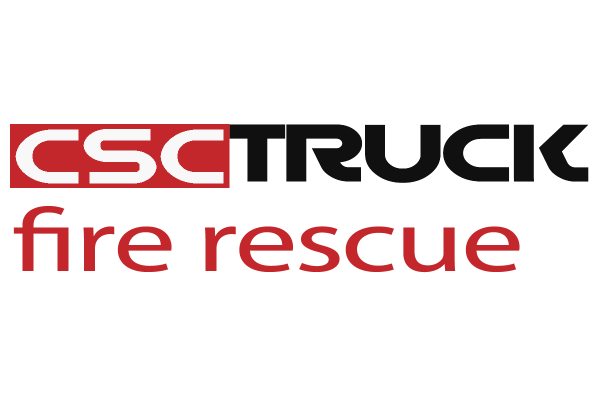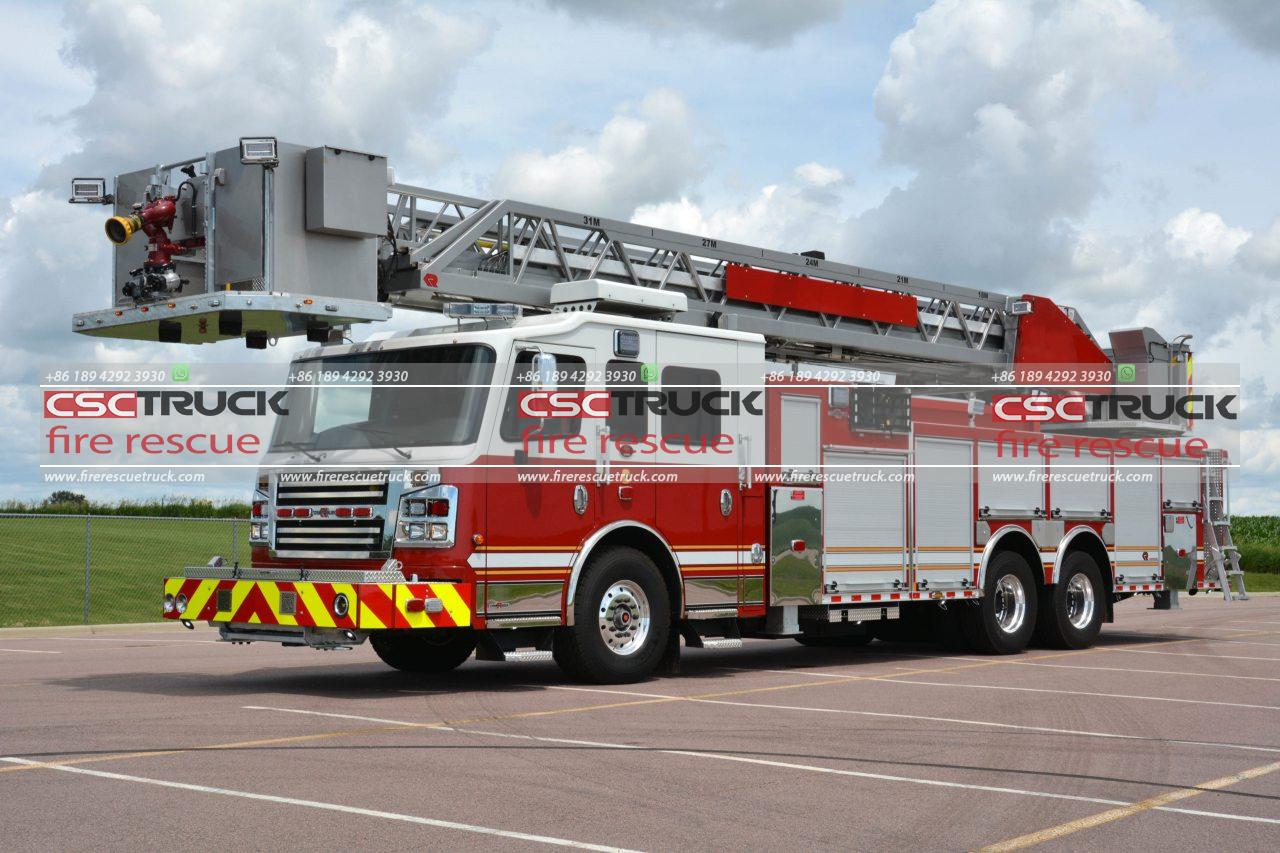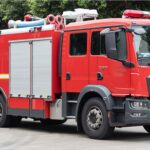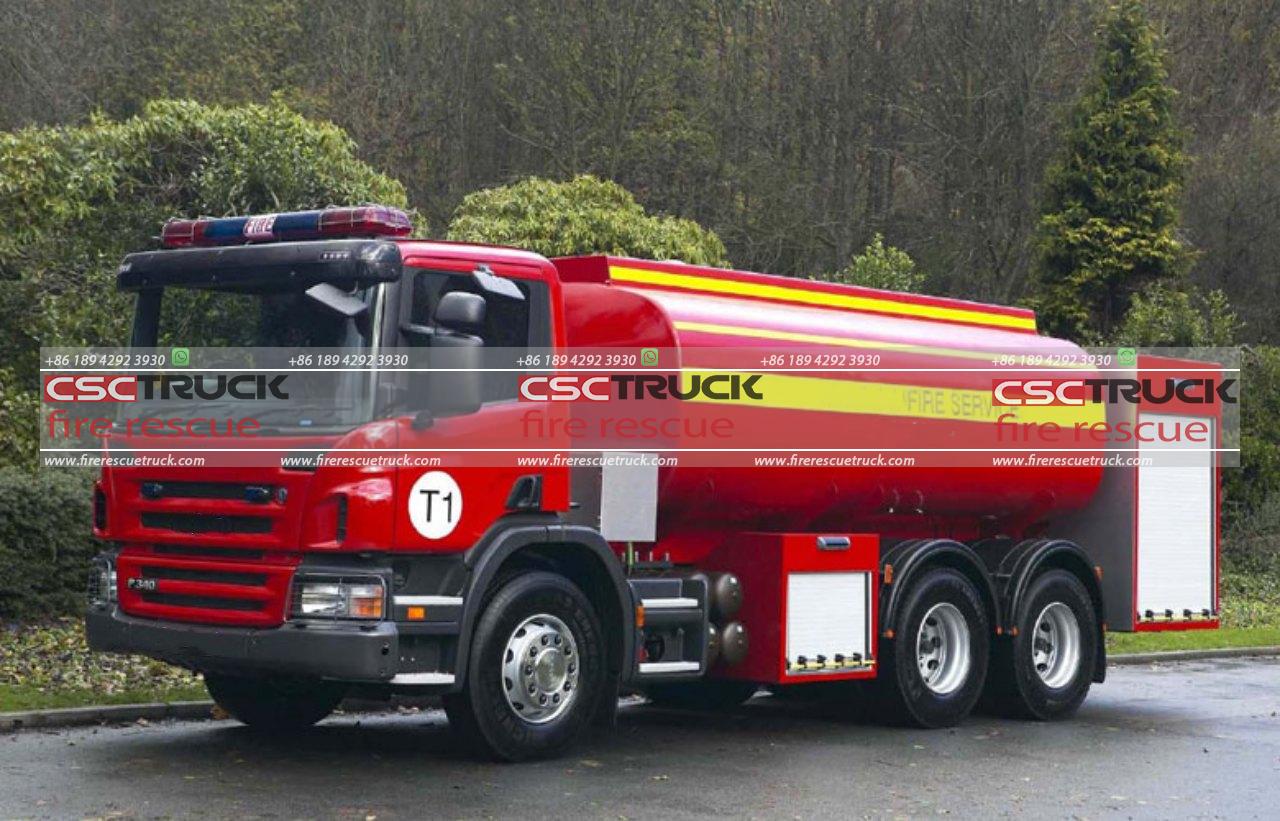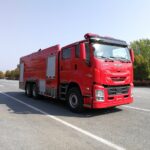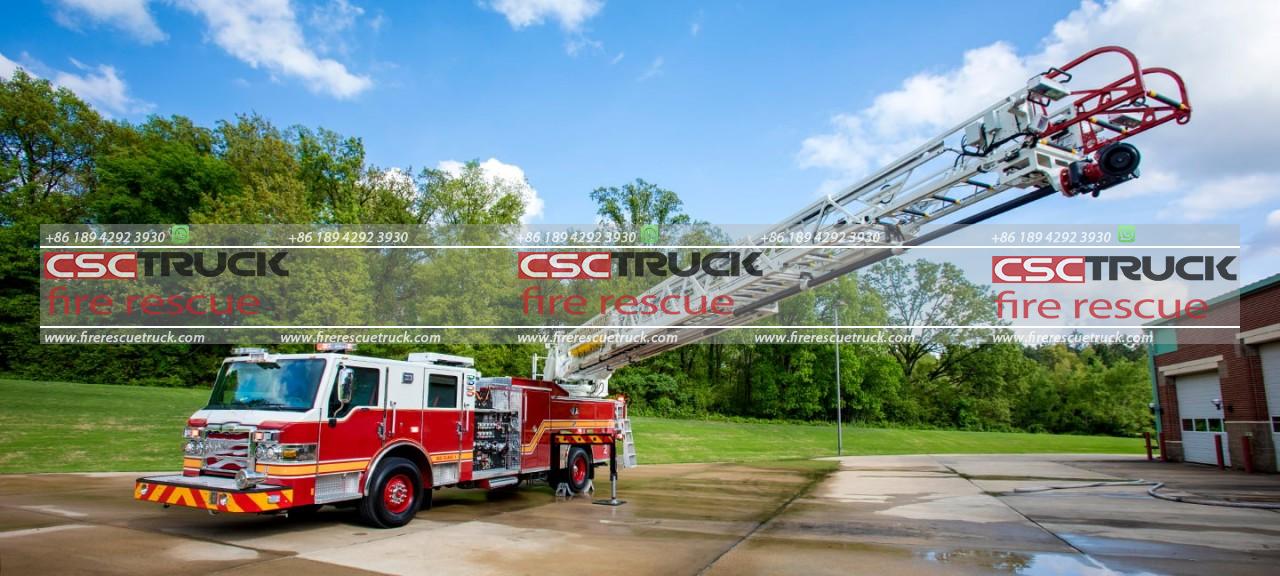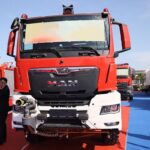Introduction
A water tower fire truck is a specialized firefighting vehicle equipped with an extendable boom and a mounted water or foam nozzle, designed for delivering large volumes of water to elevated locations. These trucks are primarily used for combating fires in high-rise buildings, industrial facilities, and large-scale fire incidents where ground-based fire suppression methods are insufficient.
Water tower fire trucks are essential assets for fire departments, providing a combination of height, reach, and high-volume water delivery. Their ability to suppress fires from above significantly improves firefighting efficiency while enhancing firefighter safety.
Key Features of a Water Tower Fire Truck
1. Extendable Boom with Nozzle
The primary feature of a water tower fire truck is its hydraulic or telescopic boom, which extends upwards and outwards to reach elevated fire zones. The nozzle at the end of the boom can be remotely controlled, allowing firefighters to direct water or foam precisely where needed.
2. High-Capacity Water Pump
Water tower fire trucks are equipped with high-capacity pumps capable of delivering thousands of gallons of water per minute. These pumps draw water from onboard tanks, fire hydrants, or other water sources to sustain prolonged firefighting operations.
3. Foam Delivery System
Many modern water tower fire trucks feature foam injection systems, which mix fire-suppressing foam with water. This feature is particularly useful for extinguishing chemical, oil, or industrial fires where water alone is ineffective.
4. Stabilizing Outriggers
To ensure stability during operation, these trucks are fitted with hydraulic outriggers that extend to support the vehicle while the boom is in use. This prevents tipping and ensures safe operation even at full extension.
5. Remote-Controlled Nozzle Operation
The mounted water or foam nozzle can be remotely controlled from the truck’s control panel or a wireless remote, reducing the need for firefighters to be directly exposed to hazardous environments.
6. Large Water Tank Capacity
Most water tower fire trucks have large onboard water tanks, typically ranging from 500 to 3,000 gallons, ensuring an immediate supply of water before additional sources are secured.
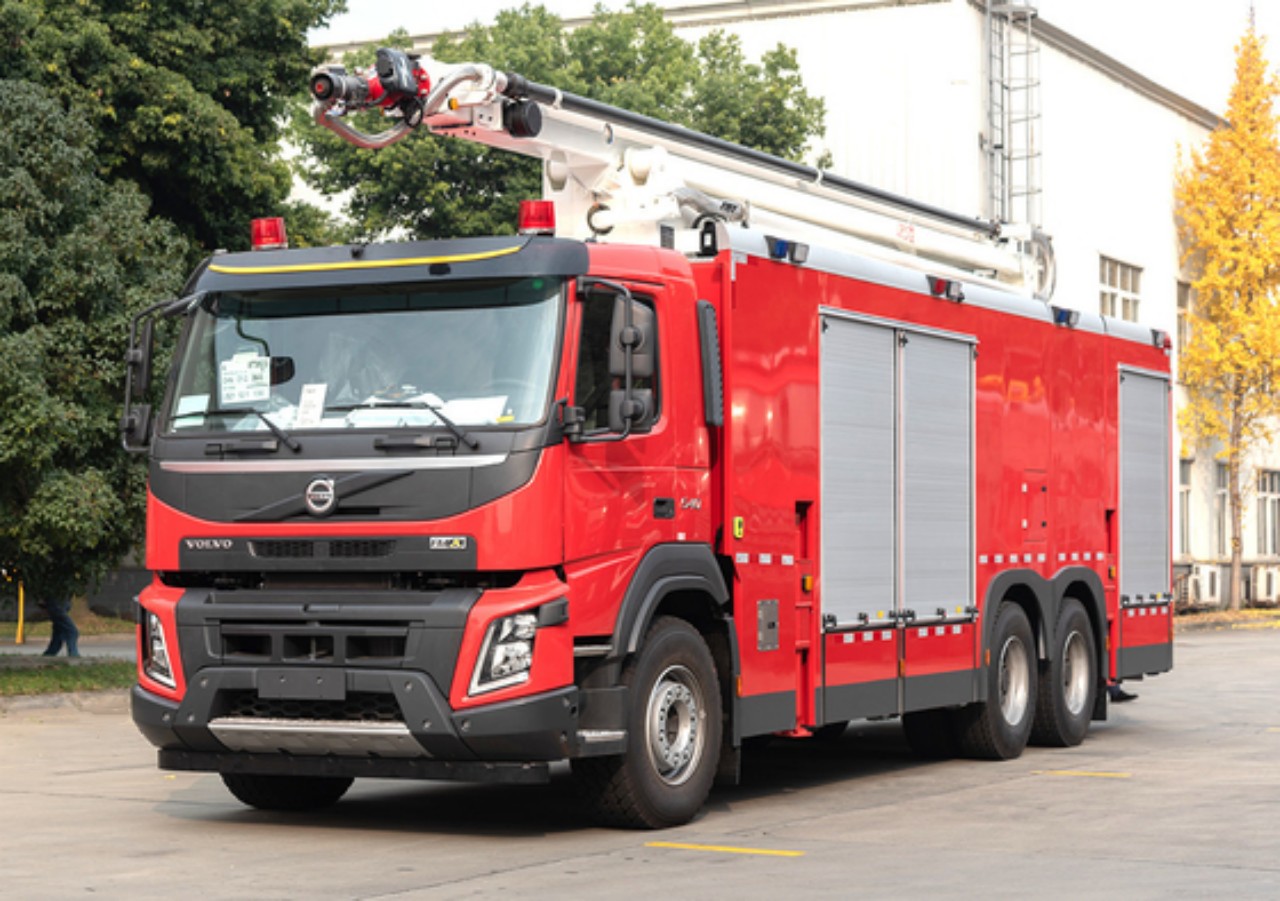
Types of Water Tower Fire Trucks
1. Telescopic Water Tower Trucks
These trucks use telescoping booms that extend vertically to reach high-rise buildings and structures. They are commonly used in urban firefighting scenarios.
2. Articulated Water Tower Trucks
Featuring a knuckle-jointed boom, articulated water tower trucks provide greater maneuverability, allowing firefighters to navigate around obstacles such as building overhangs or power lines.
3. Combination Water Tower and Ladder Trucks
Some fire trucks combine water tower functionality with a traditional aerial ladder, allowing firefighters to access upper floors while also directing water from an elevated position.
4. Industrial Water Tower Fire Trucks
Designed for large-scale industrial fires, these trucks feature extremely high-capacity pumps and foam systems, making them ideal for petrochemical plants, refineries, and factories.
Applications of Water Tower Fire Trucks
1. High-Rise Building Fires
Water tower fire trucks are crucial for combating fires in apartment complexes, office buildings, and hotels, where traditional hose lines may not reach upper floors effectively.
2. Industrial Fires
Factories, refineries, chemical plants, and storage facilities often deal with fires that require high-flow water or foam solutions, making water tower trucks an essential response tool.
3. Warehouse and Storage Facility Fires
Large warehouses and distribution centers store vast amounts of goods that can quickly fuel fires. Water tower fire trucks can blanket these large areas with water or foam to suppress fires rapidly.
4. Aircraft and Airport Firefighting
Airports use water tower trucks to handle aircraft fires, as their high-flow nozzles can quickly suppress flames on large aircraft fuselages and fuel spills.
5. Rescue Operations
Some water tower fire trucks are equipped with rescue baskets or platforms, allowing them to assist in the evacuation of people from burning buildings or hard-to-reach locations.
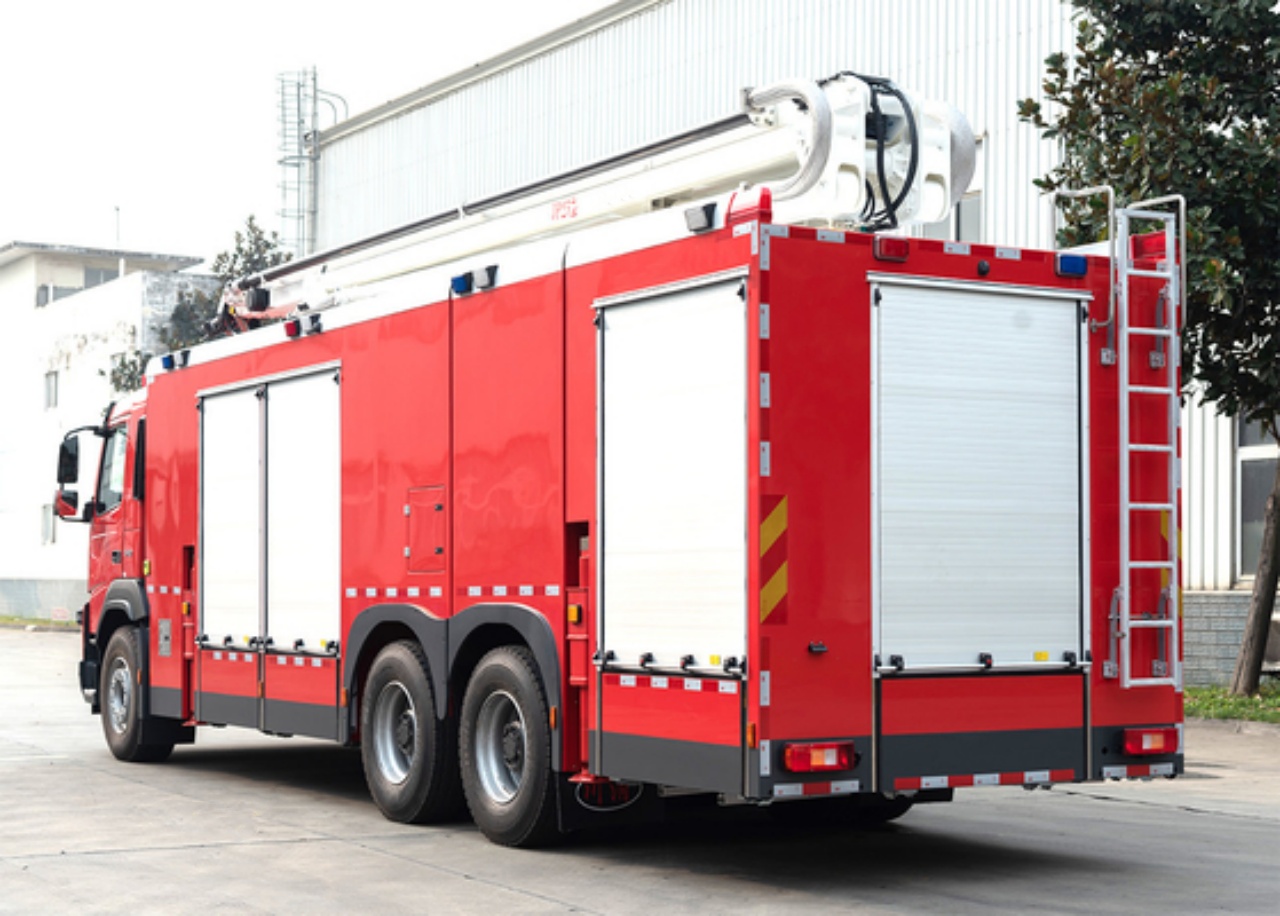
Advantages of Water Tower Fire Trucks
1. Enhanced Firefighting Efficiency
By providing an aerial attack on fires, water tower fire trucks can cover large areas with water or foam, significantly reducing fire spread.
2. Increased Firefighter Safety
Remote-controlled nozzles allow firefighters to combat blazes from a safe distance, minimizing their exposure to heat, smoke, and falling debris.
3. Rapid Deployment
With onboard water tanks and high-capacity pumps, these trucks can begin firefighting operations immediately upon arrival at a fire scene.
4. Versatile Applications
Water tower fire trucks can be used in urban, industrial, and hazardous materials firefighting, making them valuable multipurpose assets.
5. Maneuverability and Stability
Advanced stabilizing systems allow these trucks to operate in various terrains while maintaining balance during extended boom operations.
Limitations of Water Tower Fire Trucks
1. Size and Mobility
Due to their large size and weight, water tower fire trucks may struggle to navigate narrow streets or confined urban areas.
2. High Cost
These specialized vehicles are expensive, with prices ranging from $500,000 to several million dollars, depending on features and capabilities.
3. Water Supply Dependence
Although they have onboard tanks, sustained firefighting operations require external water sources, such as hydrants or tankers.
4. Limited Accessibility in Some Scenarios
In certain fire situations, such as those in underground structures or dense forests, water tower fire trucks may not be the most effective firefighting tool.
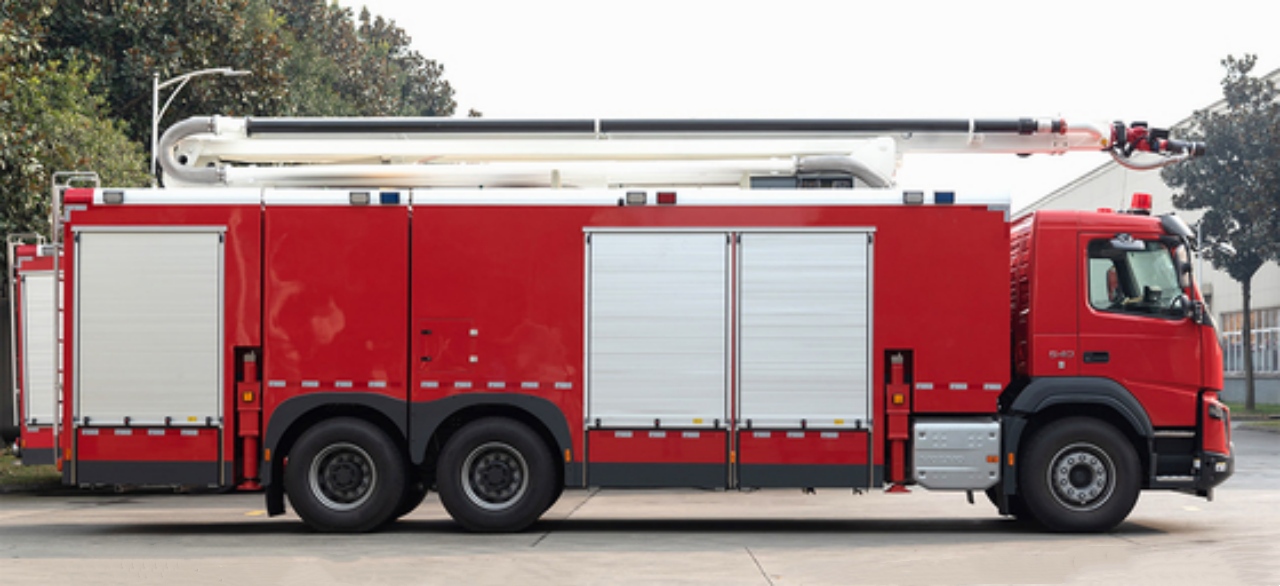
Conclusion
Water tower fire trucks are an essential part of modern firefighting, providing firefighters with elevated water delivery, enhanced safety, and powerful fire suppression capabilities. Their ability to reach high-rise buildings, industrial facilities, and large-scale fire incidents makes them invaluable assets in both urban and industrial firefighting operations.
Despite some limitations, these trucks continue to evolve with advancements in technology, automation, and firefighting efficiency, ensuring they remain at the forefront of fire suppression strategies worldwide. As fire risks grow in urban and industrial areas, water tower fire trucks will remain indispensable for fire departments, ensuring safer and more effective fire response operations.
